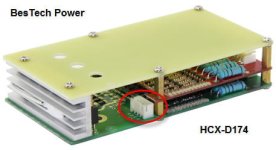pguk
100 W
Hello folks
I'm getting together all the kit for my 1st 18650 pack build. 13s5p. Samsung 35E cells from tumich on here, 20A BMS from cellman. Nickel strips on the boat. Spot welder built and coded by myself.
Now, the reason for this pack build is to replace one I built for my brother 2 years ago, which has been killed by the cheap BMS I used (blown fet shorted pack). He has been gracious enough to commission me to build him another pack - so I want to do I right this time! Hence the cellman BMS. I was reading a comment on ebikeschool.com which suggests it is possible to run the controller directly and not through the BMS, using BMS for charging only. This way I am even less likely to have the same thing happen again. Does anyone have any experience with this setup??
I'm getting together all the kit for my 1st 18650 pack build. 13s5p. Samsung 35E cells from tumich on here, 20A BMS from cellman. Nickel strips on the boat. Spot welder built and coded by myself.
Now, the reason for this pack build is to replace one I built for my brother 2 years ago, which has been killed by the cheap BMS I used (blown fet shorted pack). He has been gracious enough to commission me to build him another pack - so I want to do I right this time! Hence the cellman BMS. I was reading a comment on ebikeschool.com which suggests it is possible to run the controller directly and not through the BMS, using BMS for charging only. This way I am even less likely to have the same thing happen again. Does anyone have any experience with this setup??




